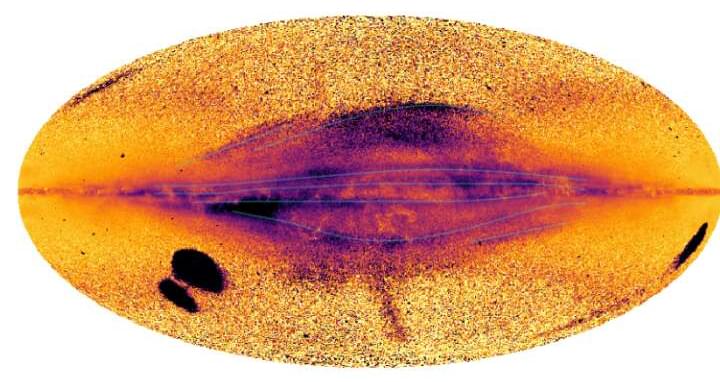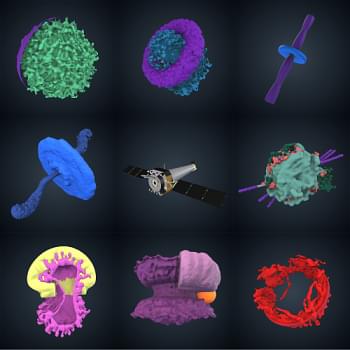Flybys of Jupiter and its moon Ganymede conducted by the NASA Juno mission have revealed new Van Gogh-like images of the gas giant, as well as the sounds made by one of its moons.
Get the latest international news and world events from around the world.

UAE looks to build on Mars mission success with tour of the asteroid belt
Less than a year after nailing its first interplanetary mission with a flawless Mars orbit insertion, the United Arab Emirates has selected its next destination: the asteroid belt.
In October, the UAE announced that it was aiming to launch a new spacecraft in 2028. Like the Hope Mars orbiter, the as-yet-unnamed asteroid mission is designed to meet specific science goals, but it is also being carefully engineered to shape the nation’s future as the UAE looks to diversify its traditionally oil-focused economy. That gives the UAE’s missions a different flavor than what NASA fans are used to seeing.

Microsoft has blocked all default browser workarounds in Windows 10 and Windows 11
When Patch Tuesday rolls around, we can usually expect a series of Windows problems to be fixed (and perhaps to see some new ones introduced), as well as new features added. But Microsoft also uses such updates to take things away — and this is precisely what has happened with the latest updates for Windows 10 and 11.
Microsoft, quite understandably, would like everyone to use its Edge browser, and has taken endless steps to ensure that it stays the default browser on as many computers as possible. With the latest operating system updates — specifically the KB5008212 and KB5008215 updates — the company has implemented a block on workarounds used by the likes of EdgeDeflector and Firefox to force links to open in a browser other than Edge.

Honda Research Institute Synthesizes Nanomaterials — A Breakthrough For Quantum Electronics?
Honda Research Institute USA (HRI-US) is doing some pretty interesting things in the field of quantum electronics. Scientists from HRI-US were able to successfully synthesize atomically thin nanoribbons. HRI noted that these are materials with atomic-scale thickness and a ribbon shape. These nanoribbons have broad implications for the future of quantum electronics, which is an area of physics that focuses on the effects of quantum mechanics on the behavior of electrons in matter.
According to the press release, “HRI-US’s synthesis of an ultra-narrow two-dimensional material built of a single or double layer of atoms demonstrated the ability to control the width of these two-dimensional materials to sub-10 nanometer (10-9 meter) that results in quantum transport behavior at much higher temperatures compared to those grown using current methods.”
The scientists along with collaborations from both Columbia University and Rice University as well as Oak Ridge National Laboratory co-authored a new paper on this topic and published it in Science Advances.

Fossil Spiral Arms Found In The Outskirts Of The Milky Way
Structures in our galaxy’s outer disk have been identified as likely fossil spiral arms, remnants disrupted by encounters with the gravity of nearby dwarf galaxies.
The Gaia Space Observatory has revealed the motion of millions of stars in exquisite detail, allowing astronomers to identify patterns, with stars’ similar movements revealing shared origins or histories. This has created a science of galactic archaeology, which has identified smaller galaxies absorbed into the Milky Way so thoroughly their identities were previously invisible.
Dr Chervin Laporte of the University of Barcelona has used Gaia’s observations to study an often neglected part of the galaxy, the area opposite the galactic center as seen from Earth. In Monthly Notices of the Royal Astronomical Society: Letters Laporte and co-authors describe structures they propose were part of the Milky Way from the beginning, but have been so distorted by external influences they can hardly be identified.

Malaysia outlines national space blueprint with focus on remote-sensing satellite development
SEOUL, South Korea — Malaysia is developing a national space blueprint to drive the growth of its space sector, particularly the manufacturing of remote-sensing satellites, satellite components and data-driven downstream services.
During a Dec. 13 parliamentary hearing, a deputy minister shared the latest update on the “Malaysia Space Exploration 2030” blueprint being fleshed out by Malaysia’s Ministry of Science, Technology and Innovation.
The deputy minister overseeing the effort, Datuk Ahmad Amzad Hashim, said the blueprint outlines a 10-year strategy in line with Malaysia’s National Space Policy 2030. The policy, adopted in 2017, recognizes the importance of space technologies for the country’s economic growth and national security.

The World’s First Optical Oscilloscope — Game-Changing Innovation for Communication Technologies
The innovation could be a game-changer for communication technologies, such as phones and internet connections.
A team from UCF has developed the world’s first optical oscilloscope, an instrument that is able to measure the electric field of light. The device converts light oscillations into electrical signals, much like hospital monitors convert a patient’s heartbeat into electrical oscillation.
Until now, reading the electric field of light has been a challenge because of the high speeds at which light waves oscillates. The most advanced techniques, which power our phone and internet communications, can currently clock electric fields at up to gigahertz frequencies — covering the radio frequency and microwave regions of the electromagnetic spectrum. Light waves oscillate at much higher rates, allowing a higher density of information to be transmitted. However, the current tools for measuring light fields could resolve only an average signal associated with a ‘pulse’ of light, and not the peaks and valleys within the pulse. Measuring those peaks and valleys within a single pulse is important because it is in that space that information can be packed and delivered.

Astronomers spy quartet of cavities from giant black holes
Scientists have found four enormous cavities, or bubbles, at the center of a galaxy cluster using NASA’s Chandra X-ray Observatory. This unusual set of features may have been caused by eruptions from two supermassive black holes closely orbiting each other.
Galaxy clusters are the largest structures in the universe held together by gravity. They are a mixture of hundreds or even thousands of individual galaxies, enormous amounts of hot gas, and unseen dark matter. The hot gas that pervades clusters contains much more mass than the galaxies themselves, and glows brightly in X-ray light that Chandra detects. An enormous galaxy is usually found at the center of a cluster.
A new Chandra study of the galaxy cluster known as RBS 797, located about 3.9 billion light-years from Earth, uncovered two separate pairs of cavities extending away from the center of the cluster.
